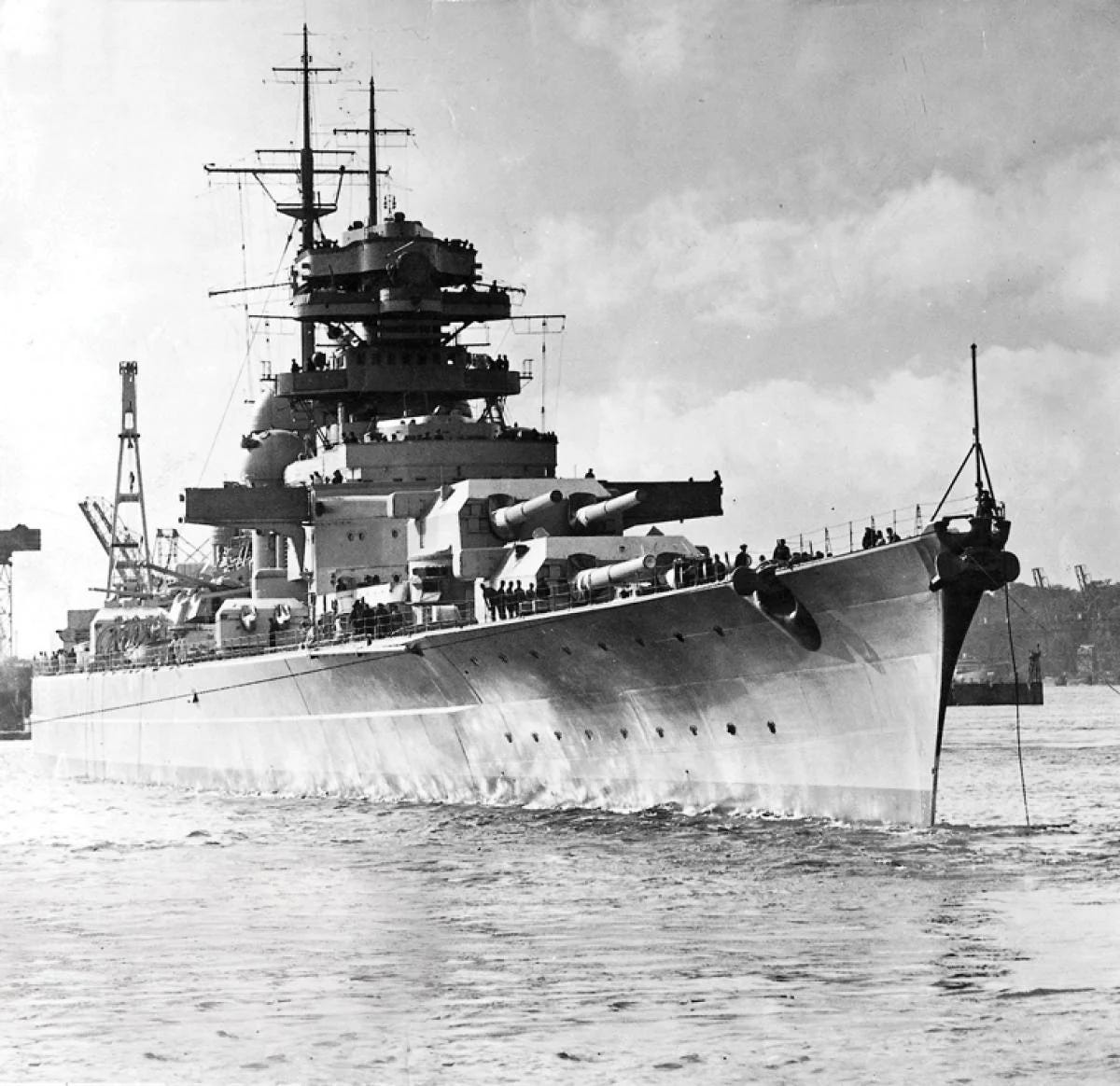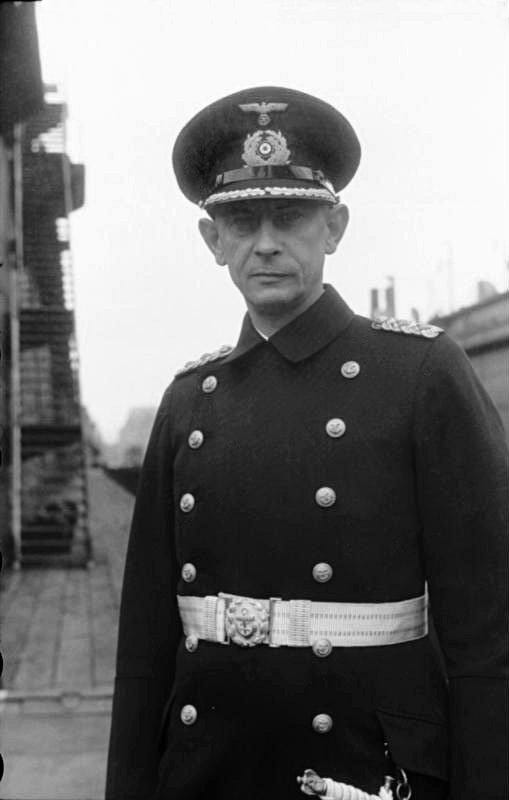The 14th February is famous for one reason and one reason alone. It was on this day in 1939 that the battleship Bismarck was launched and if I know anything about Second World War Naval history it is that people love a Bismarck (either Bismarck or Tirpitz) so I thought I would write about her end from the German point of view.
Following the battle of Denmark Strait, whic saw the end of the Hood the Bismarck steamed away victorious. The crew was exceptionally jubilant with extra rations handed out though the warship had suffered several hits from the Prince of Wales through the battle. One hit was amidships below the waterline striking Section XIV passing through the outer hull under the armoured belt before exploding against the 45mm armoured torpedo bulkhead causing flooding in the port electric generator room (No.4) as well as in the adjacent Boiler Room 2 but this was contained by damage control parties. The next his the bow (Sectio XX and XXI) above the waterline entering the portside and passing through the ship above the 20mm upper platform without exploding leaving a 1.5 metre hole through the ship and allowing 1000 tons of salt water into the forecastle which then trapped several hundred tons of fuel oil in the lower tanks thus robbing the battleship of fuel.
Captain Lindeman and Admiral Gunther Lutjens argued about their next move. Lindeman felt that the damage to the battleship sustained in the battle was, albeit minor, worthy of returning to Norway for repairs whereas Lutjens held firmly to the orders he had received from Grand Admiral Raeder to seek out convoys. Following the Admiral’s orders the battleship reduced speed to 24 knots and turned south aware that they were being followed by the Norfolk and Suffolk but that they’re only hope to escape them would be to wait for nightfall though at 6:47 p.m. the Prince of Wales reappeared and opened fire at long range reportedly (according to Norfolk) straddling her but none of the survivors of Bismarck reported it at all.
Tensions grew between the ship’s officers and Admiral’s staff about where they should be heading with the former arguing Lindemann was correct and they should double back to Bergen whilst the Admiral was still keen on heading for the French coast and this filtered down to the enlisted men who also agreed with the Captain though promises from Admiral Carls the Commander of Gruppe West had promised to send what he could to assist the battleship including fuel which was aboard the oiler Ermeland which had sailed for them already.
The first of torpedo attacks by Fleet Air Arm Swordfish occurred on the night of 24th May with aircraft from the Victorious scoring a hit amidships and flooding one of the boiler rooms whilst the second came on the 26th May damaging the port rudder and jamming it in a 12 degree turn to port making her unmaneuverable and unable to escape.
Lutjens knew that he could no longer escape the Royal Navy and sent a message to Berlin saying;
“Ship maneuverable. We shall fight to the last shell. Long live the Fuhrer”
On the morning of the 27th May the battleship continued to await Luftwaffe or U-boat assistance in very poor weather and visibility. Lutjens and Lindemann were aware that the British were still out in the grey abyss searching for them and it was only a matter of time before they were engaged again but they had no choice but to push on.
They did not have to wait long as early in the morning the Norfolk stumbled upon an unknown vessel only to find it was the Bismarck before quickly withdrawing whilst signalling the rest of the fleet. At 8:43 the King George V sighted Bisarck at a distance of 25,000 yards and within four minutes the Rodney opened fire with her main guns followed by King George V.
The Bismarck’s gunners were at a major disadvantage in that the rudder damage they had sustained meant that the battleship moved with unpredictable motions made her a very unstable gun platform which was exacerbated by the gale force winds that were blowing. The gunners manned their turrets and at 8:50 the first salvo was fired from the Anton and Bruno turrets missing the targets but their second salvo straddled the Rodney.There seems to be some disparity as some German sources believe the first salvo to strike Rodney was at 8:57 and that the first salvos fired were actually aimed at pursuing destroyers. Despite the problems with the instability the gunners still fired alternatively in salvoes of four from fore to aft directly at Rodney whilst the British ship closed the range.
At 9:02am. a 16” shell from the Rodney struck the forward superstructure damaging the bridge killing many of the senior officers, disabling the fire control detector and the foremast upper direction tower. Kapitanleutnant Burkard Freiherr von Müllenheim-Rechberg, Bismarck's fourth gunnery officer, would later write that he thought the shell was actually from the Dorsetshire. It was also his opinion that the Bismarck could hold her own against the King George V and Rodney but this shell striking the bridge “blew out Bismarck’s brain.”
Keep reading with a 7-day free trial
Subscribe to Chris’s Naval History Substack to keep reading this post and get 7 days of free access to the full post archives.





